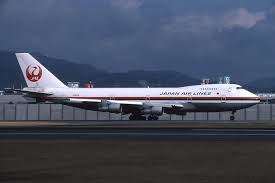
Japan Airlines Flight 123, a tragic incident in aviation history, occurred on August 12, 1985. The Boeing 747, a flagship of Japan’s national carrier, faced catastrophic consequences during its routine domestic flight from Tokyo to Osaka.
The journey started uneventfully, with Flight 123 departing from Haneda Airport. However, approximately 12 minutes into the flight, disaster struck when a catastrophic failure occurred in the rear pressure bulkhead. This failure resulted from a repair oversight years earlier, where a faulty repair had been made following a tailstrike incident.
As the bulkhead failed, it caused the vertical stabilizer to break away, severely compromising the aircraft’s control. Despite the skilled efforts of the flight crew, the situation rapidly deteriorated, leading to the loss of control and a devastating crash into the mountains near Gunma Prefecture, claiming the lives of 520 of the 524 people on board.
The aftermath of the crash prompted an extensive investigation. The flawed repair process, inadequate oversight, and a lack of thorough follow-up were identified as contributing factors. The incident underscored the importance of stringent maintenance procedures and rigorous oversight in the aviation industry.
Flight 123 remains one of the deadliest single-aircraft disasters in history. The tragedy prompted advancements in aviation safety protocols and emphasized the need for continuous improvements to prevent such catastrophic events in the future. The memory of those who lost their lives on that fateful day serves as a somber reminder of the ongoing commitment to enhancing air travel safety worldwide.
Leave a Reply